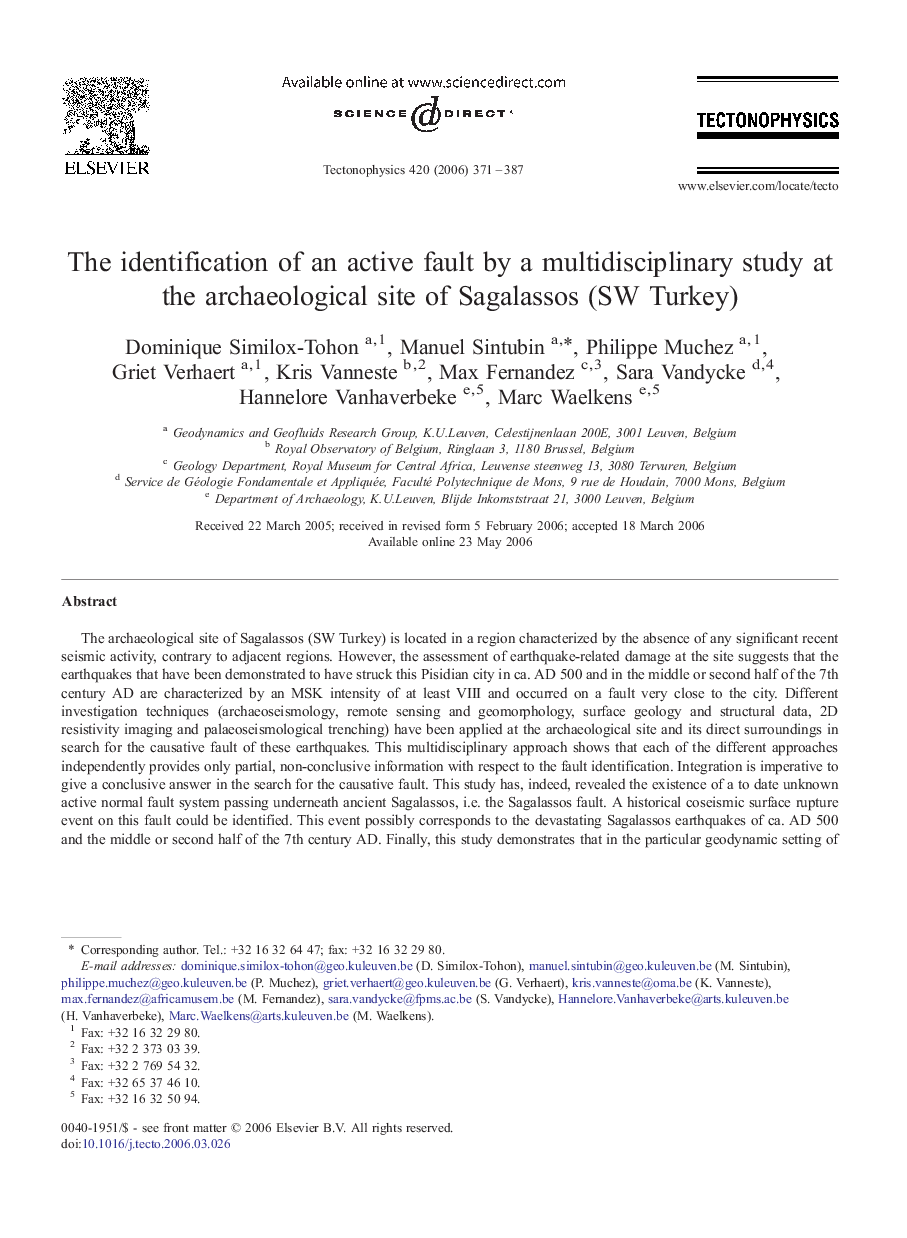| Article ID | Journal | Published Year | Pages | File Type |
|---|---|---|---|---|
| 4694949 | Tectonophysics | 2006 | 17 Pages |
The archaeological site of Sagalassos (SW Turkey) is located in a region characterized by the absence of any significant recent seismic activity, contrary to adjacent regions. However, the assessment of earthquake-related damage at the site suggests that the earthquakes that have been demonstrated to have struck this Pisidian city in ca. AD 500 and in the middle or second half of the 7th century AD are characterized by an MSK intensity of at least VIII and occurred on a fault very close to the city. Different investigation techniques (archaeoseismology, remote sensing and geomorphology, surface geology and structural data, 2D resistivity imaging and palaeoseismological trenching) have been applied at the archaeological site and its direct surroundings in search for the causative fault of these earthquakes. This multidisciplinary approach shows that each of the different approaches independently provides only partial, non-conclusive information with respect to the fault identification. Integration is imperative to give a conclusive answer in the search for the causative fault. This study has, indeed, revealed the existence of a to date unknown active normal fault system passing underneath ancient Sagalassos, i.e. the Sagalassos fault. A historical coseismic surface rupture event on this fault could be identified. This event possibly corresponds to the devastating Sagalassos earthquakes of ca. AD 500 and the middle or second half of the 7th century AD. Finally, this study demonstrates that in the particular geodynamic setting of SW Turkey archaeological sites with extensive earthquake-related damage form an important tool in any attempt to asses the seismic hazard.
